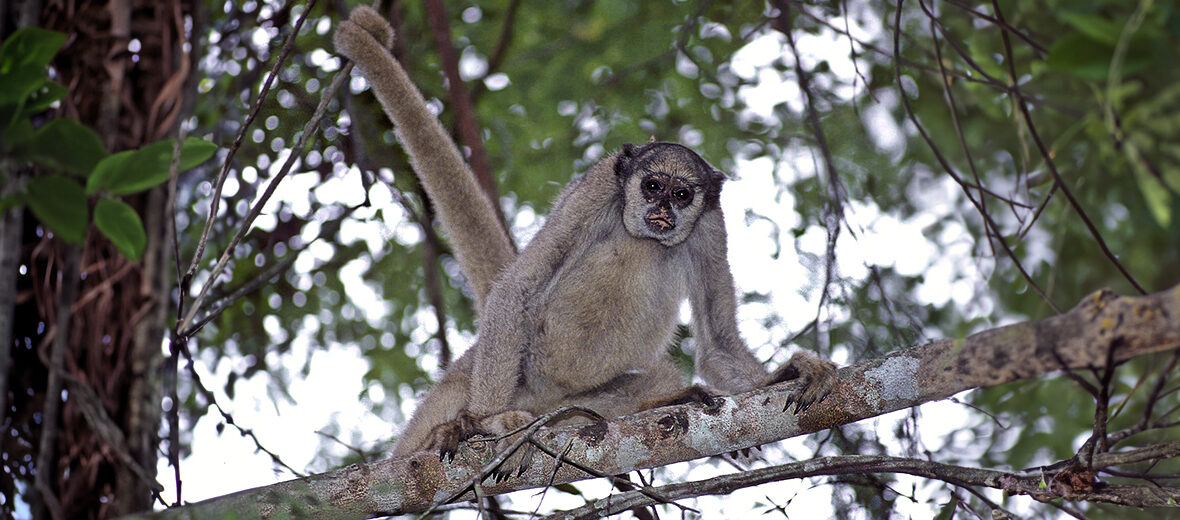
The northern muriqui, aka woolly spider monkey or hippy monkey, is actually 1 of 2 species of muriqui. They are referred to as woolly spider monkeys due to their long prehensile tail and woolen appearance. Sadly, these monkeys are subject to the threats of habitat destruction at the hands of farming, ranching, logging, wood & pulp plantations; hunting; trapping; recreational activities that puts a strain on reproduction & other daily activities; fires; and fire suppression. Due to all these threats the northern muriquis are listed as Critically Endangered by the IUCN. Their populations are also decreasing.
First the Stats…
Scientific name: Brachyteles hypoxanthus
Weight: Up to 21.2 lbs.
Length: Up to 1.63 feet, plus up to a 2.53 foot tail
Lifespan: Up to 40+ years
Now on to the Facts!
1.) Muriquis are the largest known extant New World (those from the Americas) monkeys.
2.) These critters are unique among primates in that they display egalitarian, fission-fusion societies in their social relationships. This is where they view all individuals in their troop as equals, and the size of the troops change over time, as individuals move from troop to troop.
3.) They hail only from the Atlantic Forest region of the Brazilian states of Bahia, Espírito Santo, Minas Gerais, and Rio de Janeiro.
4.) The Muriquis are heavily arboreal (spend most of their lives in trees).
5.) These monkeys move about the trees via brachiation (swinging from branch to branch), utilizing all 4 limbs and their tail.
But wait, there’s more on the northern muriqui!
6.) A cool evolutionary feature of these atelids (larger monkeys such as howler, spider, and woolly monkeys) are extra long, hook-like fingers.
7.) Even though they are primarily arboreal, they do make their share of trips to the ground to drink water, eat fallen fruit, and consume soil (for minerals).
Did you know…?
It is estimated that there are fewer than 1,000 wild individuals remaining in the wild, to date.
8.) Northern muriquis are frugivorous (eat fruit) and folivorous (eat leaves), but they also rely on bark, twigs, stems, seeds, flowers, nectar, vines, and soil (as previously mentioned) to supplement dietary intake.
9.) More fruits are eaten during the wet season and more leaves are consumed during the dry season.
10.) Due to the fission-fusion society these monkeys display, there is little to no aggression shown during mating season.
But wait, there’s still more on the northern muriqui!
11.) Males display practically zero interactions with the infants, unless the infant initiates the interaction.
12.) Muriquis are a female dominated (matriarchal) society.
Did you know…?
Males tend to meet females to mate with through introduction from their mothers.
13.) Studies have shown that having multiple partners is utilized in order to confuse paternity, limit the potential for male aggressions, and/or improving the odds of successful fertilization.
14.) Females undergo up to a 7+ month gestation (pregnancy) that yields a single infant.
15.) Ocelots, tayras, and birds of prey all hunt these primates.
Now a Short Northern Muriqui Video!
Be sure to share & comment below! Also, check out the Critter Science YouTube channel. Videos added regularly!
Want to suggest a critter for me to write about? Let me know here.
Some source material acquired from: Wikipedia & IUCN
Photo credit: Bill Bouton




